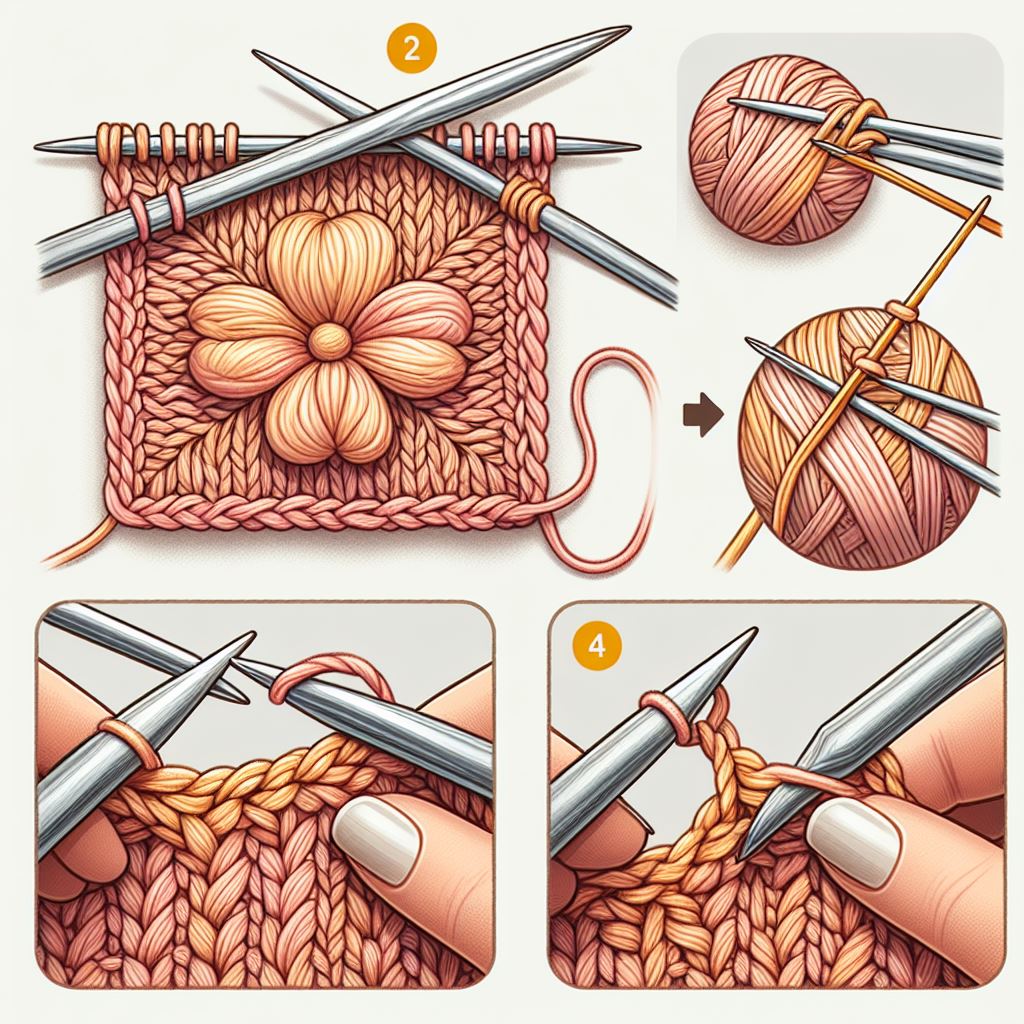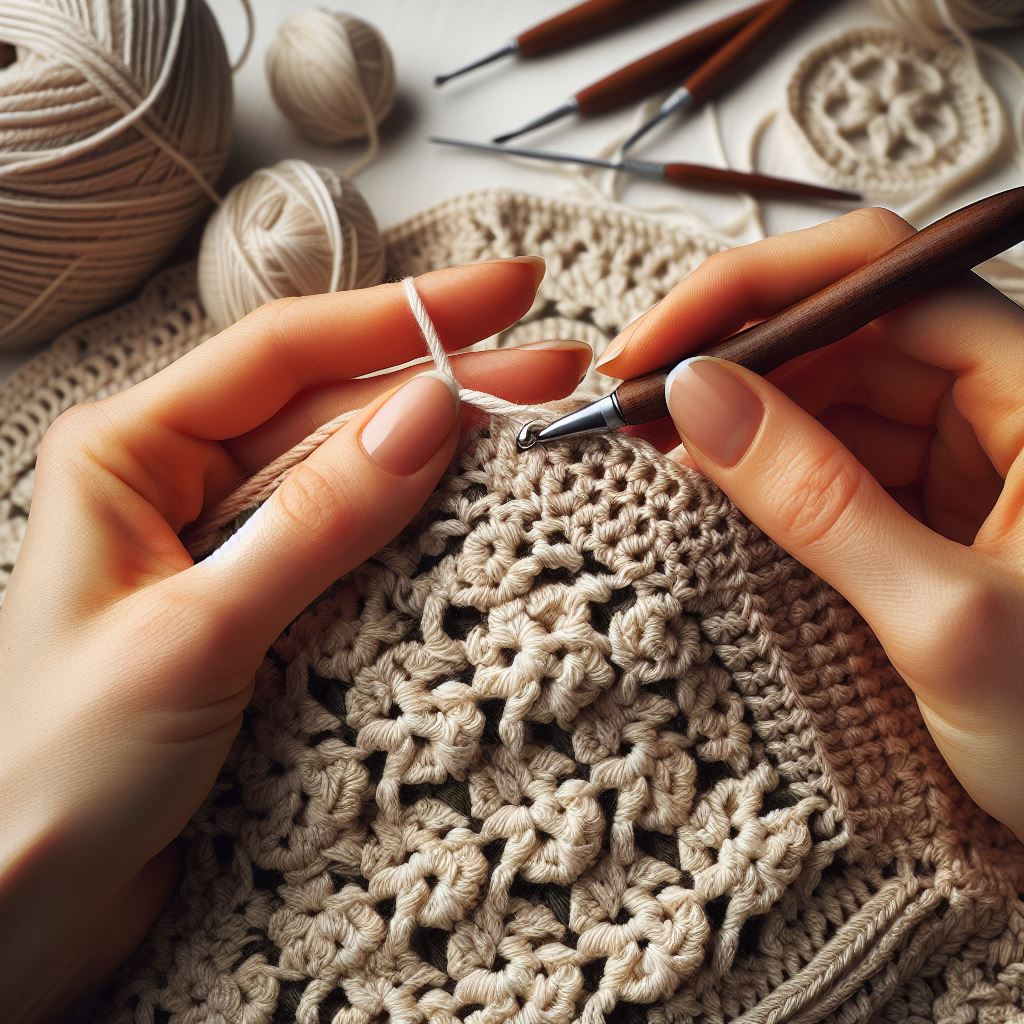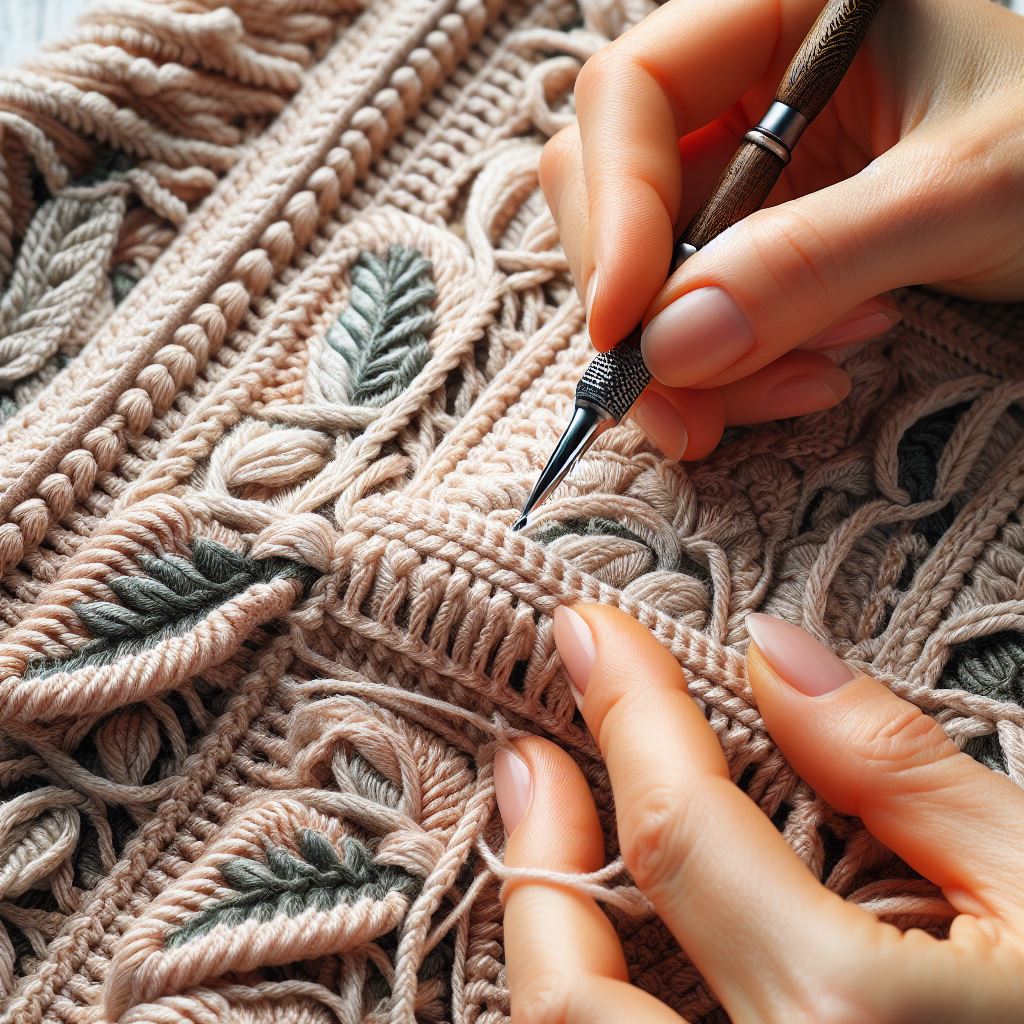Crocheting is a craft that involves creating fabric from yarn using a crochet hook. Various stitches and techniques allow crafters to produce everything from simple scarves to complex tapestries. While basic stitches like single crochet, double crochet, and slip stitch form the foundation of many projects, advanced techniques can add texture and intricate detail. The success of a crochet project is not just about the primary fabric creation; finishing techniques play a crucial role in the overall aesthetics and durability of the project. These finishing techniques, which include various joining methods and edging styles, help shape and detail the project, ensuring it looks complete and holds together well.
Importance of Finishing Techniques in Crochet Projects
Finishing techniques in crochet are vital for several reasons. They can transform the look of a piece, making seams invisible and edges neat, significantly enhancing the finished product’s professional appearance. Techniques such as blocking, weaving in ends, and employing decorative borders are essential for ensuring the pieces lay flat and retain their shape over time. Among these, joining techniques are particularly critical, as they determine the strength and the integrity of the connections between different components of a crochet project. Whether assembling squares for a blanket or joining parts of a garment, the chosen method must offer aesthetic appeal and functional stability.
Introduction to Mattress Stitch
The mattress stitch is a sewing technique used in crochet to join two pieces of fabric side-by-side with a nearly invisible seam. This technique is most commonly used in the final assembly of crochet projects where a seamless join is desirable. It involves working with the inner sides of the crochet pieces, catching the horizontal bars between stitches, and pulling the yarn through. The result is a flexible, flat seam that does not detract from the pattern of the project but instead seamlessly integrates pieces together.
What is Mattress Stitch?
Mattress stitch, often called the invisible seam stitch, is primarily used for projects requiring a neat and polished finish. This technique is crucial for crocheters who want their projects to have a refined look, where the stitches are the stars without clumsy seams, taking away from the visual appeal. It is preferred for joining crocheted squares, making garments, or any project that benefits from a nearly invisible seam.
Why it is Essential for Seamless Joins in Crochet
The importance of the mattress stitch in crochet must be balanced, mainly when the project’s aesthetic depends on the continuity of pattern and color. It allows the pieces to be stitched together without adding bulk or stiffness, maintaining the drape and integrity of the fabric. For items like sweaters, blankets, and scarves, where comfort and finish are paramount, the mattress stitch ensures that the seams are strong and contribute to the piece’s overall beauty. This ability to join components so flawlessly makes the mattress stitch a valuable skill for any crocheter looking to elevate their craft.
Preparing for Mattress Stitch
Before beginning the mattress stitch, gathering all the necessary materials is crucial to ensure a smooth and efficient stitching process. A darning needle is essential, as its blunt tip and large eye are ideal for weaving through crochet stitches without snagging the yarn. Selecting the correct type of yarn is critical; you should use the same yarn as your project or a similar weight yarn in a matching or neutral color to help the seam blend seamlessly. For visibility and ease, consider using a contrasting color during the learning phase, as this can make it easier to see your stitches and understand the process.
Once your materials are ready, the next step is to properly align your crochet pieces. Lay the pieces side by side on a flat surface under good lighting. If the edges are curved or have a pattern, it’s important to line them up exactly how they will look when finished. This alignment is crucial for ensuring your mattress stitch is invisible and even. Pinning the pieces together with rustproof pins can prevent them from moving as you stitch. Ensure that the stitches on both pieces align perfectly; this alignment will allow the mattress stitch to create a nearly invisible seam, making your crochet project look impeccably finished.
How to Mattress Stitch Crochet

Starting Your Stitch
Initiating the mattress stitch begins with adequately preparing and aligning your crochet pieces. Ensure that the edges of the pieces you wish to join are flat, side by side, with the right sides facing up. This alignment is crucial as it determines the neatness of the join. Start by threading a darning needle with a piece of yarn that matches your project; the yarn should be three times the seam length to ensure you have enough to complete the stitch without interruption. Tie a small knot at the end of the yarn to prevent slipping through the fabric. Begin at one end of your pieces, preferably the bottom right corner if you are right-handed or the bottom left if you are left-handed. Insert the needle under the horizontal bars between the first and second stitches on one side, then do the same on the opposite piece. This forms the foundation of your mattress stitch.
The Process of Stitching
Continuing from your starting point, work along the edges of the crochet pieces by alternating the sides from which you pick up the bars between stitches. Pull the yarn through each set of bars gently but firmly, ensuring you maintain an even tension. Pulling the yarn tight enough to bring the edges together seamlessly but less tight than the fabric bunches is the goal. As you progress, periodically lay the work flat to check the tension and alignment of the seam. The beauty of the mattress stitch is its invisibility; if done correctly, the seam should be nearly undetectable once you finish. Continue this way until you reach the end of the pieces. It’s helpful to occasionally pull the yarn lengthwise along the seam to tighten it uniformly, enhancing the stitch’s invisible effect.
Tips for Neat Stitching
Achieving a neat, nearly invisible mattress stitch is about consistency and attention to detail. One essential tip is constantly picking up the same part of the stitch on both pieces of fabric. Consistently catching the horizontal bars between the same stitches on each side will help ensure the seam is symmetrical and discreet. Lighting is also crucial; work in a well-lit area or use a task light to clearly see the stitches. This is particularly important with darker yarns, where stitches can be harder to distinguish. If the seam becomes visible or uneven, don’t hesitate to undo a few stitches and redo them with adjusted tension. Remember, the mattress stitch can be forgiving if you catch your mistakes early and correct them as you go. Another pro tip is to use a blunt needle, which helps slide through the yarn loops without splitting the fibers, maintaining the integrity of your crochet pieces.
Troubleshooting Common Issues
When using the mattress stitch in crochet, ensuring the correct tension is vital to avoid any bunching or gaps that can mar the appearance of your project. Pulling the yarn with a consistent force during the stitching process is essential. If the seam appears too tight, it can cause the fabric to pucker, while too loose tension might leave unsightly gaps that could weaken the piece’s structural integrity. The best way to maintain even tension is to periodically lay the project flat on a surface to check the consistency of the seam. Adjust your grip and the force with which you pull the yarn as necessary, keeping the yarn at a tension that mimics the rest of your crochet work for a seamless blend.
Another challenge involves aligning colors and patterns accurately across the pieces you are joining. This can be particularly tricky when working with multicolored yarns or intricate patterns. Always start stitching at a color change or distinct pattern feature in both pieces to ensure a seamless appearance. Take time to align the crochet pieces so that colors and patterns match up as closely as possible. If you find a mismatch starting to form, do not hesitate to undo a few stitches to realign the pieces before continuing. This attention to detail ensures that the aesthetics of the piece are not disrupted by the joining process.
Finishing Touches

Securing the stitch at the end of your joining work is crucial for the durability and neatness of your crochet project. Once you’ve completed the mattress stitch along the entire length of the pieces, it’s essential to weave in the ends of the yarn securely. Use your needle to thread the yarn end through the back loops of several stitches along the seam and then back through a different path to lock the yarn in place. This hides the yarn end inside the work and prevents it from unraveling with use or washing. Additionally, apply a small amount of fabric glue to the tips of the ends for extra security. However, this is optional and should be done with care to maintain the flexibility and softness of the crochet.
Adding a decorative border is an optional but effective way to give your project a polished look. Borders can help frame the work, enhance its design, or even strengthen edges, especially in items like blankets and garments. Choose a border style that complements the overall design of your crochet piece. For a simple yet elegant finish, a single crochet border suffices, or for something more elaborate, consider shell stitches or picot edging. Start the border by attaching the yarn at any corner or edge, and work your way around the project, ensuring that stitches are evenly spaced and corners are neatly executed. This enhances the project’s visual appeal and integrates the mattress-stitched sections seamlessly into the rest of the work.
Final Thoughts
The mattress stitch is a fundamental technique in the crochet world, vital for those looking to achieve seamless joins in their projects. This stitch is renowned for its ability to invisibly blend pieces together, making it an indispensable skill for creating everything from sophisticated garments to cozy blankets. Its versatility extends to almost any project where a neat finish is paramount, underscoring its importance in enhancing crochet work’s aesthetic and structural integrity. Mastering the mattress stitch elevates the quality of finished projects and expands the range of items a crafter can undertake with confidence.
To truly appreciate the beauty and effectiveness of the mattress stitch, practice is critical. Engaging regularly with this technique will help crafters develop a more refined skill set, improving results in all crochet projects. Each stitch is an opportunity to perfect one’s craftsmanship, and with each project, the nuances of the mattress stitch become more intuitive. Thus, I encourage all novice or seasoned crocheters to incorporate the mattress stitch into their repertoire. The more it is practiced, the more indispensable it becomes, allowing every crafter to achieve professional-looking results that are as beautiful on the inside as they are on the outside.
FAQs
What is the best yarn to use for the mattress stitch?
The ideal yarn for executing a mattress stitch is typically the same yarn used in the project. This ensures that the color, weight, and texture match perfectly, creating an invisible seam. For projects using lighter or more delicate yarns, consider a thinner yarn or a matching thread to minimize bulk in the seams.

How do I ensure my mattress stitch is invisible?
To achieve an invisible mattress stitch, careful attention must be paid to the alignment of the fabric edges and the consistency of the stitching. Pulling the yarn through at regular intervals is crucial, maintaining an even tension that brings the pieces together without puckering. Using a yarn needle and working under the horizontal bars between stitches can help hide the yarn within the fabric.
Can I use the mattress stitch on any crochet project?
The mattress stitch can be applied to most crochet projects that require a flat seam. It is particularly effective in projects where a neat, invisible join is necessary, such as in garments, blankets, and other accessories. However, it may only be suitable for somewhat bulky yarns or projects where a more decorative seam is desired.
What do I do if my pieces need to be aligned correctly?
If the pieces to be joined are not aligning, double-check that they are the same length and have an equal number of stitches along the edges to be seamed. Adjustments must be made by blocking the pieces to the same size or by adding or skipping stitches during the seaming process to evenly distribute any discrepancy.
How can I make my mattress stitch more secure?
To ensure that your mattress stitch remains secure, it is vital to weave in the ends thoroughly at the start and finish of the seam. Additionally, knotting the yarn ends after weaving them in can help prevent the stitch from unraveling. Opting for a yarn that felts slightly can also contribute to a more secure seam, as the fibers will bind together with use and washing.
